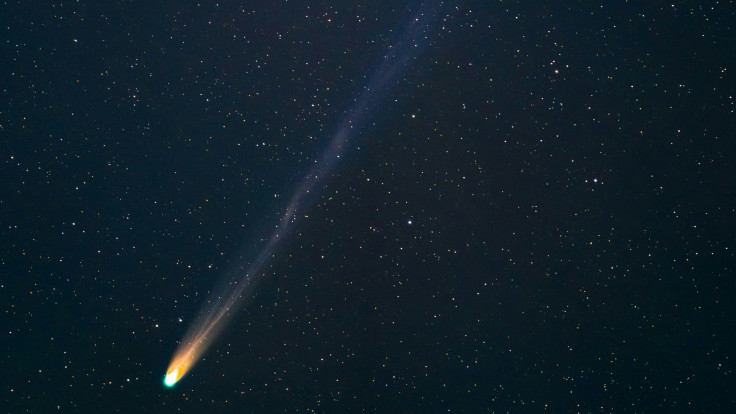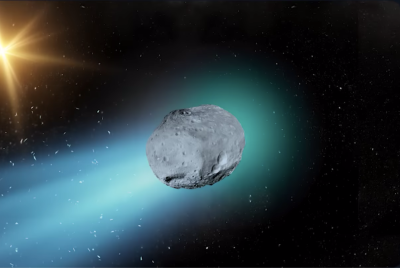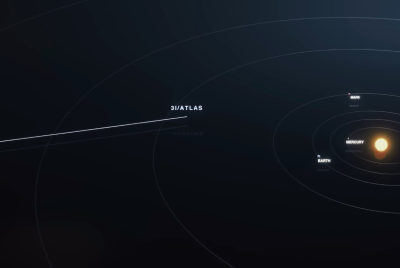Did The Interstellar Comet 3i atlas Do Something With Our Sun That Caused It To 'Glitch' Because It's An Alien Spaceship?
Viral TikToks say 3I ATLAS is a spaceship, but NASA confirms it is a comet

An interstellar object known as 3I ATLAS has sparked a wave of online theories suggesting it may have caused the Sun to 'glitch'. The idea, which originated on Reddit and quickly spread across TikTok, has captivated thousands of users who are convinced that the comet is not a rock at all, but an ancient alien spacecraft deliberately approaching our solar system.
According to scientists, however, 3I ATLAS is nothing more mysterious than a naturally occurring comet, though its path through the solar system is undeniably extraordinary.
The Interstellar Visitor That Ignited a Debate
Astronomers first detected 3I ATLAS on 1 July 2025 through the Asteroid Terrestrial-impact Last Alert System (ATLAS) in Chile. The discovery made headlines as it became only the third confirmed interstellar object after 1I 'Oumuamua and 2I Borisov. NASA describes it as a metal-rich comet, travelling on a hyperbolic orbit that confirms it came from beyond our solar system and will never return.
Space agencies note that the comet's trajectory will take it past the Sun and back into deep space by early 2026, without posing any danger to Earth. Observations so far show it behaves like a normal comet, with dust and gas tails forming as its surface heats up.
Despite these clear findings, the internet has found plenty of room for speculation. On Reddit, one user claimed the object slowed down after being hit by a solar flare, calling the event a 'warning shot' from the Sun. Another post argued that 3I ATLAS might be 'made of stainless steel', suggesting the material was too refined to occur naturally.
A popular comment summarised the mood: 'The Sun hit this object head on with a solar flare that should have cooked it, and instead, it slowed down.'
TikTok Fuels Alien Craft Speculation
On TikTok, creator @klow_214 took the theory further, describing 3I ATLAS as a colossal alien ship that may have travelled across galaxies for billions of years. In a video viewed hundreds of thousands of times, the creator suggested it could be an 'observational probe' or 'interstellar ark', built by a long-extinct civilisation to record cosmic events.
The video framed the comet's return as a moment of destiny, implying that its creators designed it to appear only once humanity had reached a certain level of technological advancement. Comments under the post were filled with excitement and concern, with some viewers claiming that 3I ATLAS had already affected solar activity.
'The Sun arched three times,' one user wrote. 'There is a possibility of huge black spots exposing themselves in the next week.'
What Scientists Actually Say
Despite these viral claims, scientists remain clear: there is no evidence that 3I ATLAS is anything other than a comet. The European Space Agency notes that the object's metallic composition is consistent with natural interstellar debris. NASA's Solar Dynamics Observatory has recorded no anomalies in solar behaviour linked to its passage.
Solar 'glitches' or temporary dimming are normal features of the Sun's 11-year magnetic cycle, which periodically produces bursts of flares and dark spots. Experts say such fluctuations have occurred countless times before, long before the appearance of any interstellar objects.
'Comets do not possess enough mass or energy to alter solar dynamics,' one astrophysicist told Space.com. 'The theories are imaginative, but not physically possible.'
Why the Theory Endures
Still, the fascination persists. Social media thrives on the mix of mystery and fear, and the idea of a visitor from beyond the stars fits both. Theories about alien probes like 3I ATLAS build on cultural touchstones from 2001: A Space Odyssey to Interstellar, blending science fact with myth.
For astronomers, though, the attention has an upside: more people than ever are learning about interstellar comets and how they differ from asteroids. Observatories around the world will continue tracking 3I ATLAS as it approaches perihelion, its closest point to the Sun, later this winter.
Whether viewed as a scientific wonder or a cosmic warning, 3I ATLAS has reignited humanity's oldest question, are we truly alone? For now, the data says yes. But the debate unfolding across TikTok and Reddit shows how, even in 2025, mystery still travels faster than light.
© Copyright IBTimes 2025. All rights reserved.





















